[Atari, Adventure International]
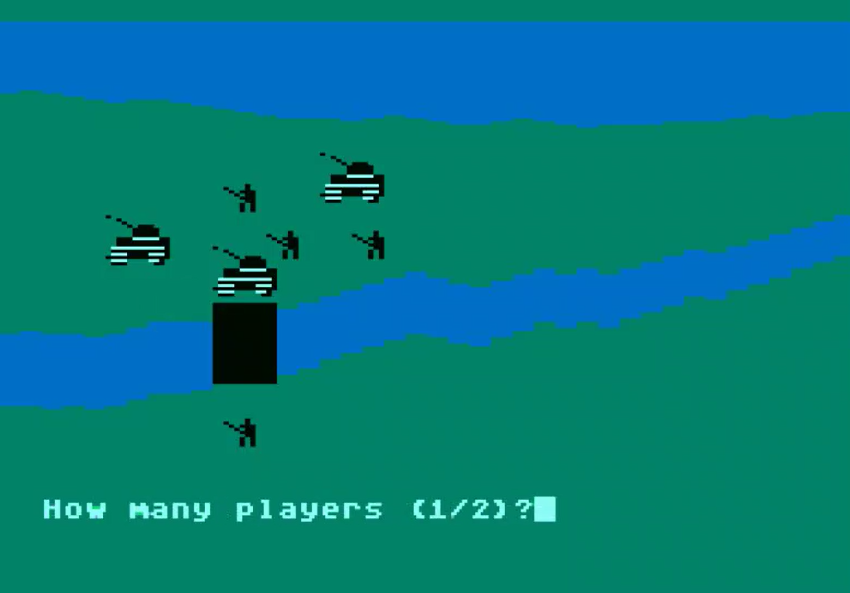
One of the forgotten perks of being a developer before the Google era is that you could name your games whatever you wanted without a marketing person challenging you about keywords and SEO. This gave us names as snappy as Tawala’s Last Redoubt (“Galactic Empire IV: Guerilla Battles” if it had been released today) or in another genre Betrayal at Krondor (“Fantasy Tactics: Heroes of Krondor“). Alas, Adventure International did not rise to the occasion with their only solitaire wargame, calling it simply War.
As simple as it is, the name is a bit of a misnomer. The game is more about a battle, with two cities on each side of the river, and various units (the A, I, E and †) ready to duke it out.
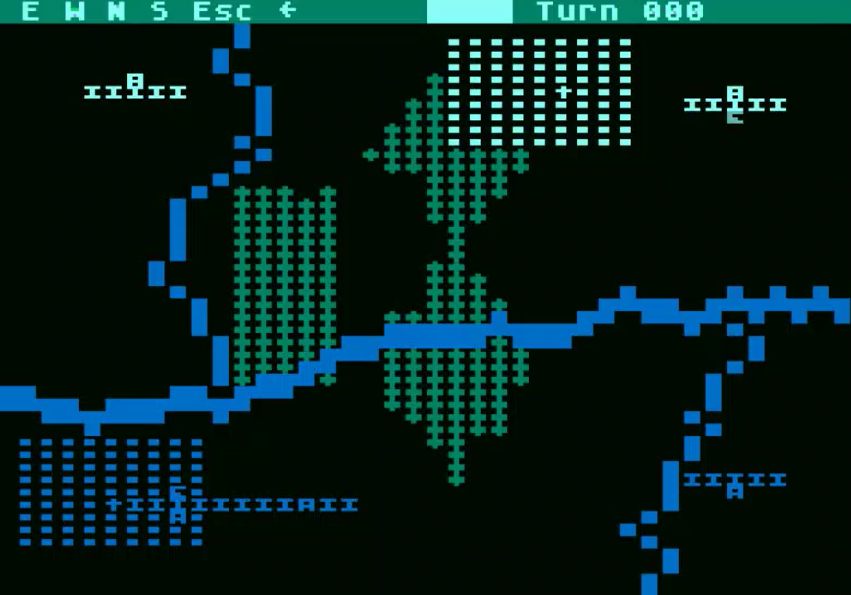
My objective as the white player is to destroy all the units of the computer in the South and take its city (the large square) to stop further reinforcements from incoming. To this effect, I have 4 types of units:
- The Engineer [E] is a weak combat unit, but it can build (or destroy) bridges over the water,
- The Infantry [I] is an average combat unit with some limited anti-air capacities,
- The Armour [A] is a powerful combat unit, able to destroy bridges but not planes. It moves at the same speed as Infantry,
- Finally, the Bomber (†) is fast and can insta-kill any ground unit, but it needs to reload in the city after every attack. It can only be shot down as it moves in the vicinity of enemy infantry – the more infantry, the more likely to be shot down, but in general the chances are low.
I am playing at maximum difficulty, so the computer starts with 6 extra units compared to me, so my plan is to regroup my two forces, count on the future reinforcements to defend and attack en masse with everything I have.
It takes some time to regroup: all ground units can move 5 squares in open or city terrain, but crossing without a bridge requires starting the turn next to the river, then “teleporting” on the other side and skip the next turn. Meanwhile, my bomber harasses the isolated computer units in the South-East, who have the same kind of river-crossing issues. With each bombing run, its chance of being shot down decreases as there are fewer AA to go through:
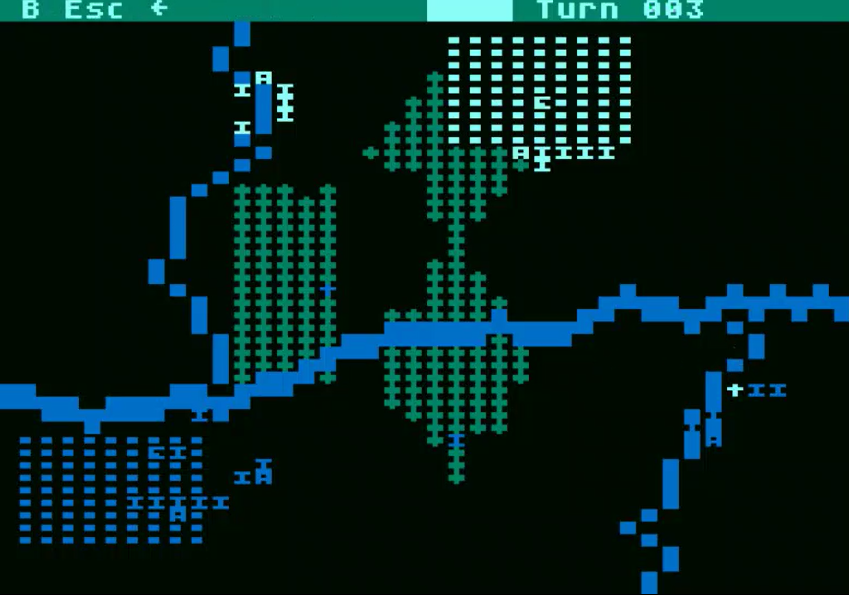
After some regrouping has been done, I move toward the forest on the other side of the enemy city. In forest, units have a strong defensive bonus so it is a good place to build a bridge and cross.
My plan does not survive for long. I encounter some enemy infantry in the forest. In War, when two hostile units are next to each other, combats are resolved in the least intuitive way possible. The game checks all units within 5 squares from the combat and takes their strength (more distant units bring less), and then after comparing the force ratio rolls a dice on a Combat Result Table and applies the result.
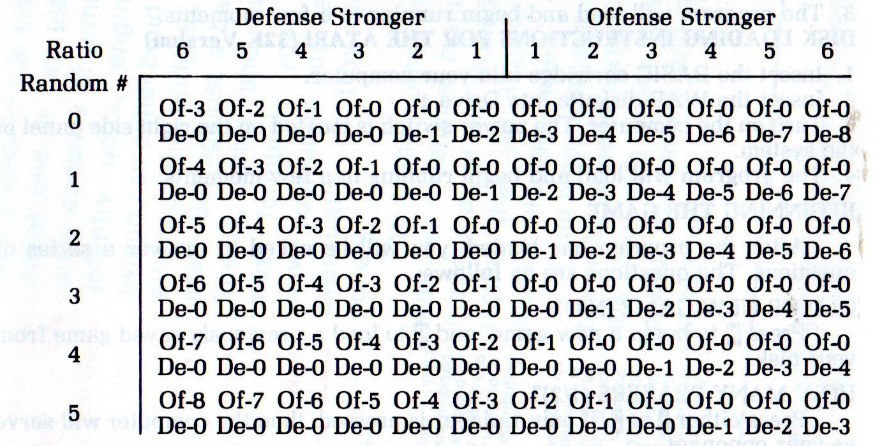
When the result is the destruction of some units, those are applied to random units within a 5-tile range. On my way to the forest I destroy some isolated enemy units, but in one of the battles I should have won my engineer is picked for tribute.
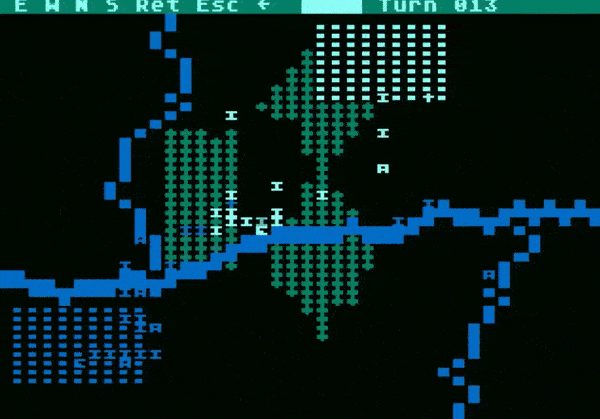
Without my engineer, I can’t cross safely – any unit that would cross would be poorly supported by the units on the other side of the river, and would block the crossing of their buddies for 3 turns. I hold my position in the forest, with the computer sending units alone to cross and die.
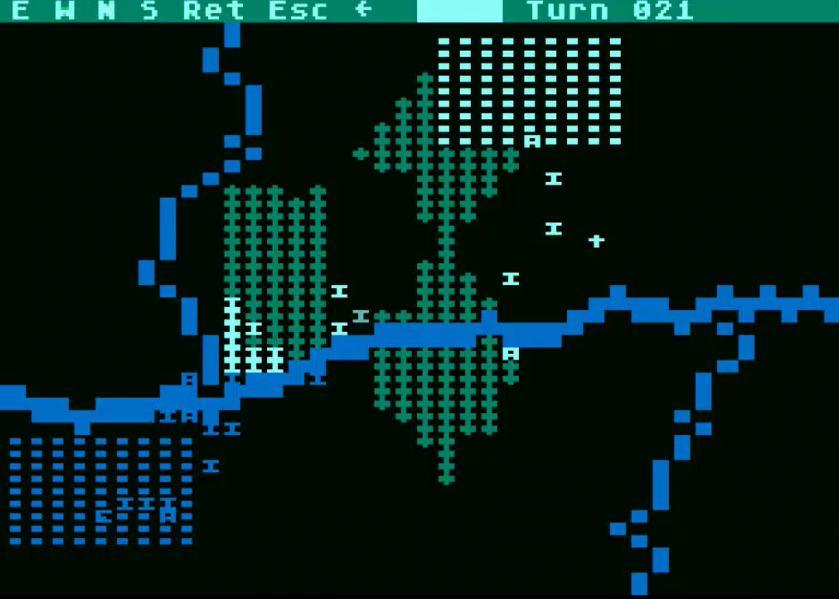
Instead of crossing next to the enemy city, I decide to cross much further East with my reinforcements. Once I have enough units, I will attack from the East, let my units near the city cross and overwhelm the enemy city. Meanwhile, the computer’s plan is to send its units to die slightly faster than it gains new ones.
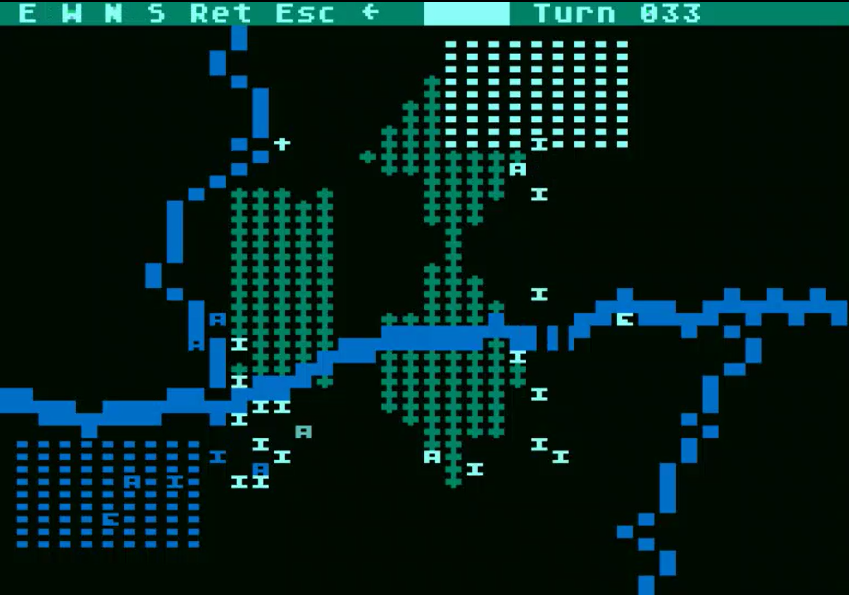
When I finally attack, there are almost no defenders in the city. I comb all the city tiles to stop the reinforcements from coming.
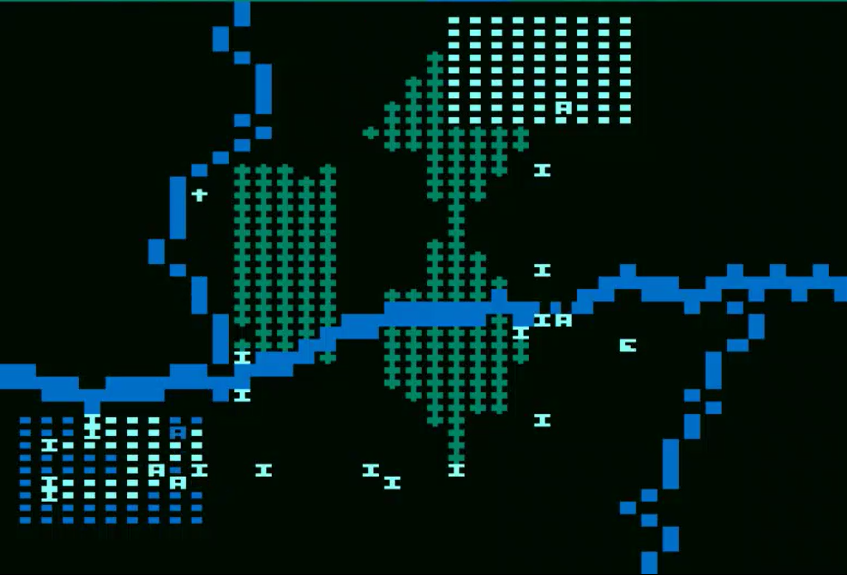
I win soon thereafter, upon destroying the last enemy armour.
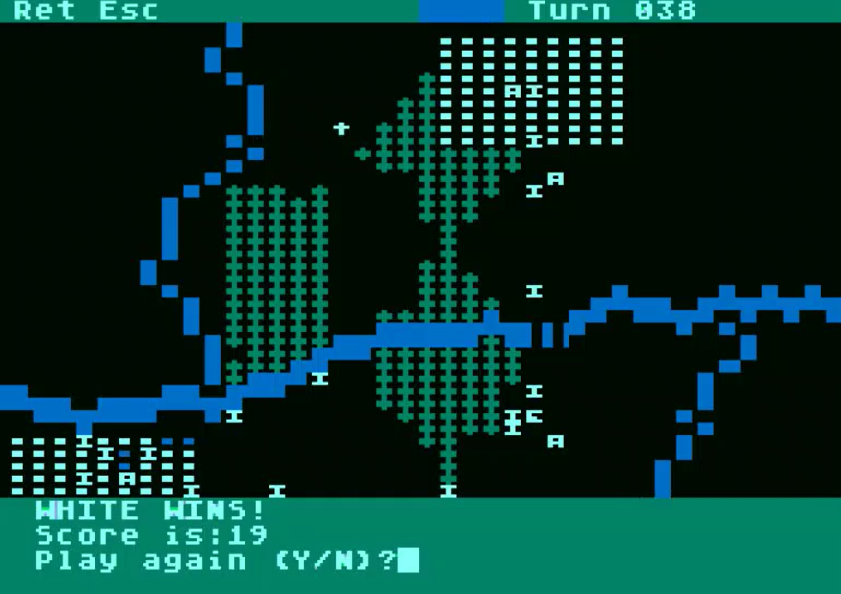
Ratings & Reviews
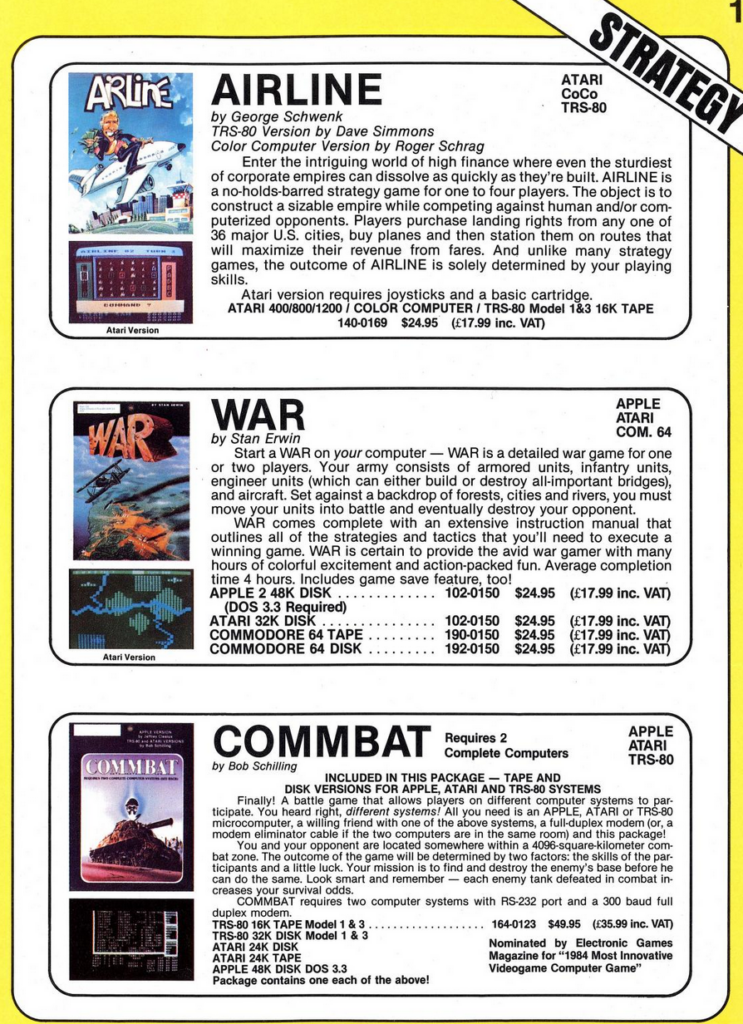
War, by Stan Erwin, published by Adventure International, USA
Genre: Combined Arms Tactics
First release: June 1982 on Apple II, Atari
Average duration of a session: Around 30 minutes
Total time played: 1 hour
Complexity: Easy (1/5)
Final Rating: Totally obsolete
Ranking at the time of review: 90/123
War is the only solitaire game of the 3 wargames published by Adventure International. Adventure International is of course the company created by Scott Adams shortly after the success of Adventureland. I don’t think I should spend time writing about Scott Adams and Adventure International – this has been done much better than I could ever do by the Digital Antiquarian and I don’t have any legitimacy to talk about the specialist of a genre to which my only exposure are Digital Antiquarian and Renga in Blue‘s proses.
As for the developer, Stan Erwin, my research came back empty, except for 3 other games he designed: Road Race (1980), Major League Baseball (1980) and Go (1983). The first two were self-published and the last one was published by the Hayden Book Company.
A. Presentation: Very poor.
B. UI, Clarity of rules and outcomes: Poor. The controls are better than expected: you have to move all your engineer units, then all your infantry, then all your armour, then all your planes, but within those categories you can move them in any order and you can “cancel” a movement. On the other hand, it is not easy to understand at a glance which units are in combat and which units are not.
Despite the advertising blurb promising “an extensive instruction manual that outlines all the strategy and tactics you’ll need to execute a winning game“, the manual is diminutive, does not include strategy and is unclear on some key rules.
C. Systems: Very poor. I am not opposed to Combat Result Tables, but they need to make sense and losing units several squares away from the combat itself while the unit which initiated combat survived feels a bit off. Moreover, the strength values decrease linearly with distance, which means that the game favours number over positioning – which is an issue to start with and particularly aggravating where there is only one objective to take (the city) and as such no reason to split one’s forces.

My engineer in the AAR was destroyed even though at range 4 it had not contributed at all to the combat.
War has other oddities:
- Units far away from the action are more likely to die in combat than if they had been closer to the action because they contribute fewer strength points than they could have but are just as likely to be picked to die.
- You can bomb the enemy city’s squares to cripple its production… but given a city has 81 tiles and the time it takes to travel to the enemy city to drop one bomb, it is useless.
- You can build bridges across but also along the river:
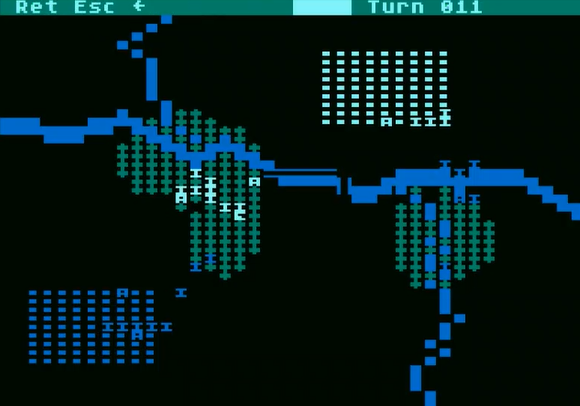
D. Scenario design & balancing: Very poor. The AI is stale and as I explained earlier the map does not leverage War‘s ruleset. There is a random map generator, but all the maps are structured the same way.
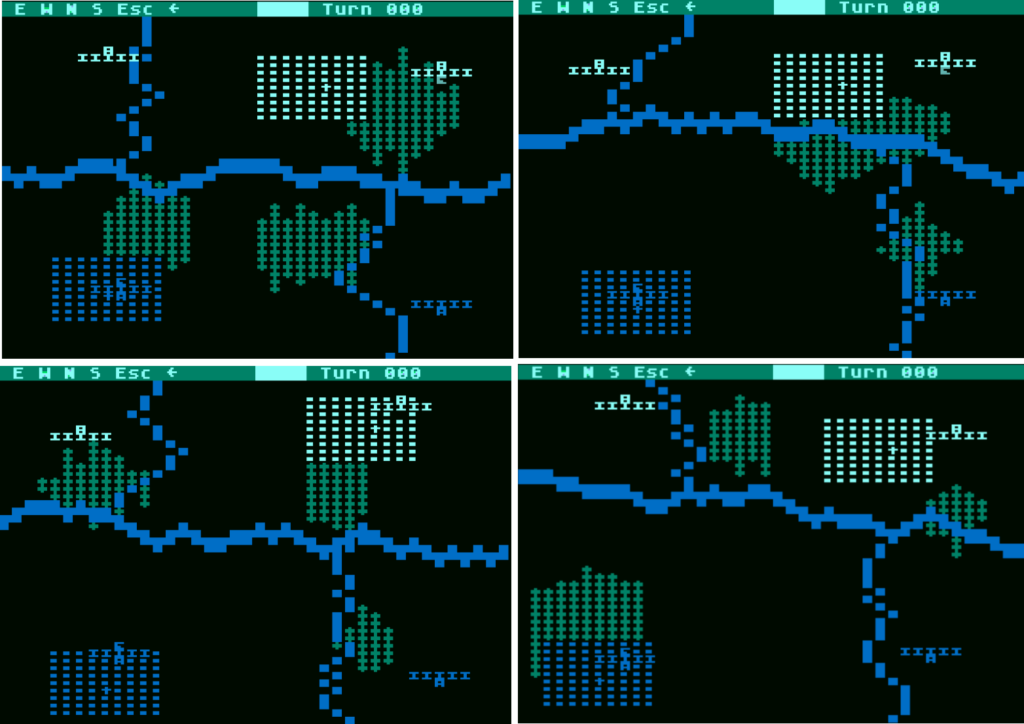
The customization options are marginal (rate of reinforcement and “handicap”, eg a bonus in units to a player).
E. Did I make interesting decisions? No.
F. Final rating: Totally obsolete. I could not find a manual for this game until very recently for a reason: the game is bland, even by 1982 standards. At least it is not actively painful to play.
Reception
I could only find one review for War, though of course I am not helped by the generic name. The review is from Softalk in April 1983, and is negative: “Adventure International produces some of the most entertaining adventures this side of the Colossal Cave. Unfortunately, War doesn’t meet the company’s usual standard”.
It may be the last time I write about Adventure International on this blog, its two other wargames (Commbat and Conquest of Chesterwoode) being multiplayer only – but who knows, I am occasionally delving into multiplayer games. While I have received more material for games from 1982 and 1983 that I had originally skipped, I feel I need to return to 1984, and start to tackle some of the monster wargames of that year, in particular Gary Grigsby’s War in Russia.